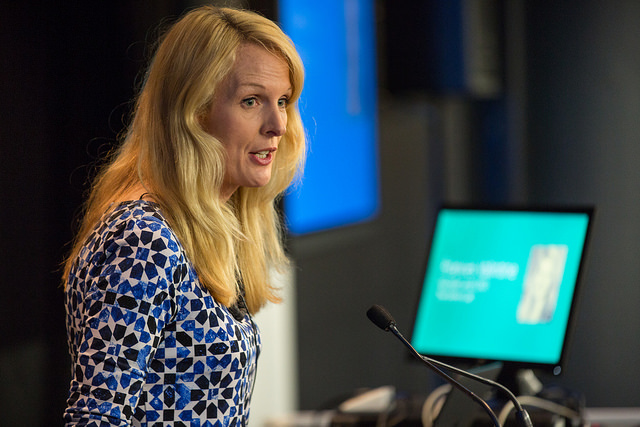22 lessons I’ve learned from a private practice pioneer in allied heath
In my quest to keep up-to-date with information about launching and running a successful private practice speech pathology clinic, I stumbled, courtesy of @wespeechies, via Twitter, upon an interesting article by Robert Payne. Mr Payne is, to this day, a clinical director of a hearing and audiology practice that has been in business since 1939.
1939!
So what can we learn from a practice launched during World War II? What changes can we make to our practices based on lessons learned by three generations of audiologists in private practice over the last 75 years?
Here are my favourite 22 tips, some paraphrased and reworded to make them relevant to speech pathology:
On private practice: what to expect and what matters most
1. Expect some negative reactions: When you first go into private practice, expect a degree of disapproval from some colleagues and/or professional organisations. There are plenty of private practice sceptics and some clinicians in public practice who think that the term “Professional Private Practice” is a contradiction in terms. Prove them wrong by providing first-rate client care ethically. (Editor’s note: Professional organisations, such as ASHA and the SPA, are much more supportive of private practice these days than they were in the early days of private practice Mr Payne is referring to.)
2. Do it for the right reasons: Your objective should be to deliver quality health care to your clients. Your initial role is to educate clients about reasonable expectations, and to guide them through the assessment and treatment process so they can make intelligent choices about their health care options.
3. Beware of commercialising your services: Strategies that identify a practice with a product commercialise the service and are inconsistent with a philosophy of educating and guiding clients toward the best possible results.
4. Focus on client relationships: De-emphasise the service/product and emphasise the client’s confidence in, and comfort with, your practice. Foster good relationships with clients, rather than engaging in promotions and other product-oriented marketing techniques (see more below).
On finding the right model
5. Develop your own practice model, but first learn from others in private practice: Private practice in many allied health fields has no “traditional” model and we only have each other on which to model our practices. There are several models in which private practices structure fee schedules, personnel and staffing, office/clinic location, image, service delivery techniques and marketing strategies. For example, geography may play a large part in determining appropriate fees.
On staff
6. Employ versatile staff: Hire people who can perform a range of clinical services, rather than hyper-specialists, who will be less flexible if your practice or client mix changes. Staff should be expected to be able to perform all types of assessments and treatments offered by the clinic. Staff should be well-educated, technically well-trained and motivated. They also need to show good judgment so you can trust them.
7. Key professional staff: If you use a corporate structure, you will need corporate officers, such as directors. If you run a multi-site practice, you should employ: (a) a clinical director who reviews each report, trains new staff, and introduces new testing procedures and therapy techniques; and (b) an office manager who works with professional staff and is responsible for payroll, accounts payable and receivable, mass mail-outs, book-keeping, marketing mail-outs and financial/management reports.
8. Key support team members: You should retain an accounting firm and legal counsel to review all contracts and company policies.
9. Favour salaries over commissions: Incentives should operate to foster a sense of team, rather than individual competition, especially if staff are frequently scheduling for each other.
10. Look for alternatives when you can’t afford to raise salaries and wages (assuming minimum conditions are met/exceeded): Consider increasing holiday time and flex-time in scheduling. Rotate staff between practice areas and (if relevant) practice sites to keep staff from feeling they are stuck in a rut.
11. Share information and invest in Professional Development: one of the saddest scenarios of a sole practice is isolation from daily clinical exchange. Encourage the constant interchange of ideas and accessibility to others’ knowledge on a daily basis. Encourage staff to join and participate in professional organisations and to attend local, state and national meetings to augment the practice’s collective knowledge. Reimburse staff for such meetings on the proviso that they must share what they learn with the team on return.
12. Meetings: Attempt to meet up as often as possible – recognising that this is a difficult thing to do consistently.
On marketing and advertising
13. Marketing to new clients: Focus on gaining, then maintaining, a marketing advantage for your services by defining a strong image of your practice in the public mind. “We have decided to neither discount our services nor position ourself in an “exclusive” price category.” Marketing activities that work include a newsletter, a re-evaluation notice sent to clients, education of referral sources (such as doctors), as well as copies of assessment reports to referring physicians, which place you in the position of co-providers of healthcare services which reinforces physicians’ referral decisions.
14. Marketing to existing clients: Marketing to an existing client base is extremely important. Develop mailings as well as follow-up telephone contacts to do this. Send newsletters or relevant articles, but treat it as a way of staying in touch rather than as a “selling” tool. Help clients keep in frequent touch with you. Stress results and include related services needed to produce them including instruction, counselling and reading material (for clients and their families).
15. Market to your strengths: For example, Payne markets his practice as a long-standing organisation known for dedication to clients, fair pricing policies, and proximity to all major compass-points of the city. They write articles for senior citizen and other special interest magazines, and accept all invitations to speak about health-related topics. Management is active in community and service organisations.
16. Stay independent: Resist product or service-specific advertising of all kinds and do not identify your practice with any one manufacturer or publisher. Offer nothing other than the best care for each client – regardless of who supplies the equipment needed to offer it. Maintain good relationships with suppliers, but do not enter industry-related promotional programs or other incentive programs in favour of the best treatment for clients.
17. Do not over-sell: If you oversell a product or service you undersell yourself.
On location and ambiance
18. Position, position, position: Choose an office close to major hospitals and referral points.
19. Health over business: Emphasise health care in a clinical setting, rather than a business setting.
On fees and finance
20. Fees: Client service should be the basis of your fee structure. Each professional should be responsible for discussing the costs of your services and methods of payment with clients. Wherever possible, get paid upfront, although allow more flexible arrangements like instalments when warranted – judiciously. (Editor’s note: also be careful not to discriminate in the way you price services for different clients.)
21. Benchmarks: There are no/few published industry/statistical norms from which to measure private practice key performance indicators or success in some areas of allied health. Beginning practitioners might pattern their initial efforts from industries in which such data exist, e.g. optometric practices. (Editor’s note: more on this shortly.)
On quality systems
22. All staff should perform duties and functions similarly in testing procedures, reporting and therapy: Work hard with your team to reach a consensus on how to approach the job you do, and to encourage discussion of ways to shape your practice to better meet the needs of your clients.
What a treasure trove of information and tips! We hope you found our summary useful.
Key source: Payne, R. H. (1992). Aspects of a Private Practice. AJA, March, 27-32.







